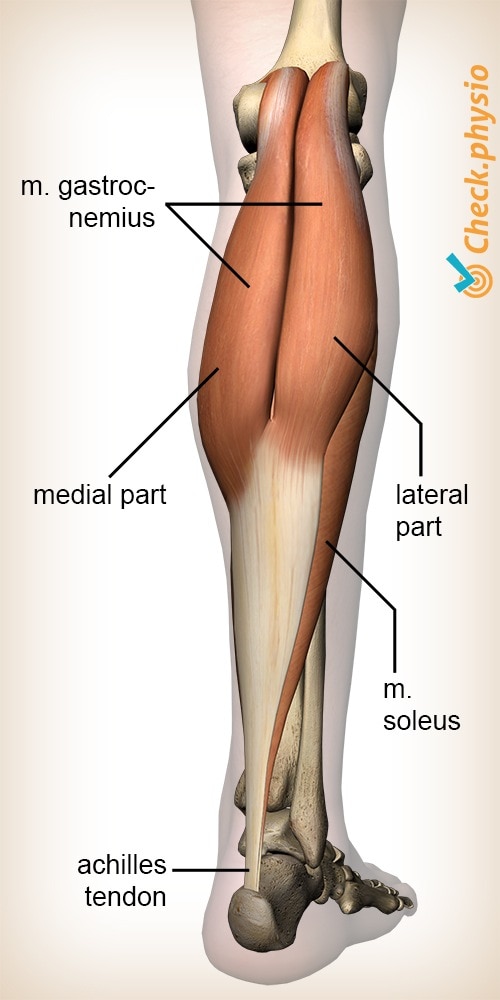Calf muscle tear
Rupture of the gastrocnemius muscle
A calf muscle tear is the result of a (partial) rupture of the gastrocnemius (calf) muscle. The tear is the result of a sudden, powerful contraction of the muscle against high resistance.

Description of condition
The muscle that defines the calf is called the gastrocnemius muscle. A calf muscle tear occurs during contraction of the muscle. Usually the tear is located along the inner (medial) part of the gastrocnemius, at the site of the muscle-tendon transition.
Cause and history
In general, a calf muscle tear will occur during exercise. A classic case is that the patient felt as if a small stone or twig hit the calf during exercise. This is the moment when the muscle tear occurred.
Signs & symptoms
- A sharp pain is felt in the calf immediately after the injury.
- The patient is usually unable to walk any more because of the pain.
- Standing on the toes of the affected leg is painful.
- Stretching the calf muscle is painful.
- The calf may be slightly swollen.
- The muscle tear is sensitive to touch.
- In the days following the injury, a bruise (hematoma) may be visible under the skin where the tear occurred.
Diagnosis
Treatment
It is important to keep weight off the muscle in the first few days, up to a week after the injury. This can then be followed by light weight-bearing on the muscle under the supervision of a physiotherapist. Using an exercise program to increase strength and mobility, the muscle is then trained until the sports activity can be resumed. Recovery takes approximately 6 to 10 weeks. It is irresponsible to resume sports activities before this time and without careful gradual increases in the training load.
Exercises
Training the muscle must be done very carefully. That is why we give you a carefully constructed exercise program with exercises for whiplash in your calf.
You can check your symptoms using the online physiotherapy check or make an appointment with a physiotherapy practice in your locality.
References
Lohman, A.H.M. (2004). Vorm en beweging. Leerboek van het bewegingsapparaat van de mens. Houten: Bohn Stafleu van Loghum.
Nugteren, K. van & Winkel, D. (2008). Onderzoek en behandeling van spieraandoeningen en kuitpijn. Houten: Bohn Stafleu van Loghum.
Theunissen, J., Eekhof, J. & Neven, A.K. (2008). Zweepslag van de kuit. Huisarts en Wetenschap. 2008; 11:572-574.


